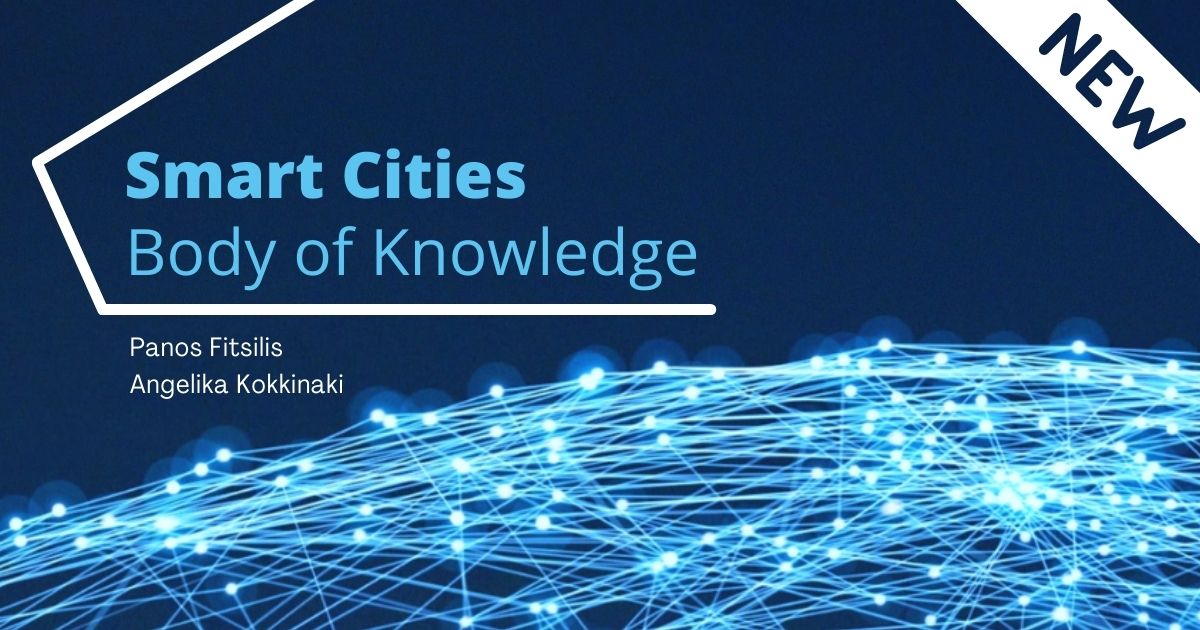“Smart Cities Body of Knowledge” | New book co-edited by Prof Angelika Kokkinaki and Prof Panos Fitsilis
The book presents the major outcomes of the Smart DevOps project and addresses the gap between current and future skill demands on the municipal workforce by emphasizing the exploitation of emerging deployment paradigms such as DevOps.
The new release presents the first version of the Smart Cities Body of Knowledge (SCBoK), which is the most important deliverable of the SmartDevOps project (https://smartdevops.eu/dev/). The project itself is an attempt to systematically approach the topic of required smart cities competences. Furthermore, the book offers the curricula that can be used to develop the required knowledge coherently and systematically.
Moreover, the book addresses the main question regarding the need of specialized professionals for the development of smart cities and whether this specialization constitutes one or more new, discrete professions.
Smart City Professions
The professions and skills presented were derived from various viewpoints, which took on an international perspective through laborious market research. The research was conducted in the context of the SmartDevOps project, concluding that three new job professions are needed for smart city professionals, namely:
- Smart City Planner
- Smart City IT Manager
- Smart City IT Officer
For the job profiles above, relevant competences fall under four distinctive groups, which are dutifully presented in the book.
Book Chapters
The book consists of six Chapters, as follows:
Chapter 1 sets the dimensions through which the smart city concept has been evolving. This background information is evidently helpful as it provides the overall idea of how the conceptual definition of smart cities has evolved and illustrates that different stakeholders are not necessarily aligned or have the same perspectives. This observation has led to a major theme in the research of this project, namely what kind of job profiles are relevant for smart city planning, development and optimal operation, a topic that is further explored in the following Chapter.
Chapter 2 presents an analysis of the main intended users in smart city organization, and emphasis is placed on the professionals who undertake tasks relevant to the design, development and operation of smart city initiatives and services. The three main job profiles for smart city employees are presented, as well as the different perspectives and competencies between those distinct job profiles. Complementary to that, there is the need to identify to what extent different SC administrative profiles require different general/transversal and specific competencies.
In view of this requirement, Chapter 3 explains the methodology followed to extrapolate essential competencies for each job profile. Multiple methodological tools were applied to ensure that no significant viewpoint was missed or undervalued. As shown in Chapter 3, an extensive literature review of academic papers, professional publications, and governmental reports was conducted. Secondary data were complemented with primary data collected through interviews, focus groups, as well as an extensive survey in four member states. The outcome of this unprecedented endeavour resulted in extrapolating the necessary curricula and competencies for smart city professionals.
In Chapter 4, the competencies are organized into modules, and modules are grouped into categories consisting of i) transversal competencies, ii) general IT management competencies, iii) DevOps related competencies, iv) service-related competencies, and v) smart city-specific competencies. Each category is colour-coded in this publication to enable readers to identify competencies of their interest and provide them with an implicit mind map of relevant competencies.
Chapter 5 presents the inventory of competences per competence group. For each competence a short description, the basic terminology, the knowledge domain, the learning objectives, the competence content, the related learning outcomes, and readings, is presented. Competence groups are colour-coded for the convenience of the reader.
Chapter 6 is a call to action as this is a constantly evolving topic and many additional contributions are sought to realize the vision.
This is a particularly informative and useful book for all those interested in smart cities and a must for those who would like to further develop and master the required competences for smart cities.

